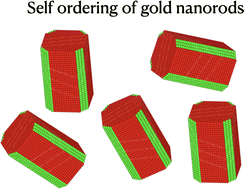A polarizable coarse-grained model for metal, metal oxide and composite metal/metal oxide nanoparticles and its applications
Abstract
We present a selected set of exemplifying applications of the novel polarizable coarse-grained model [see the first part] to various outstanding problems in the physics and chemistry of nanoparticles: electrostatic potential around silver and gold nanoparticles; spontaneous and external electric field-driven self-organization of gold and silver nanoparticle systems; and physisorption of carbon dioxide on titanium dioxide nanoparticles decorated with a gold catalyst. In the first application, the developed model has shown capabilities of predicting long-range potential with accuracy comparable to the tight-binding density functional theory methods. Furthermore, the electrostatic potential analysis in hot spot regions allowed us to identify twin defect lines in a silver nanostar as a promising candidate for an enhancer in surface-enhanced Raman spectroscopy. In the second application, the developed model has facilitated the elucidation of the microscopic mechanisms responsible for the self-organization of gold and silver nanoparticles. Analysis of Monte-Carlo simulations established that the self-organization process is driven by van der Waals interactions in the absence of an external electric field, and that it becomes gradually driven by electrostatic interactions in the presence of an external electric field with increasing strength of the external electric field. In the third application, the developed model combined with Monte-Carlo simulations has identified the dominant mechanism responsible for carbon dioxide transfer to the catalytic sites. Analysis of the obtained results indicates that surface diffusion is the dominant mechanism for the transport of carbon dioxide to the catalytic sites, and only in exceptional situations, direct physisorption becomes a competitive mechanism with the surface diffusion mechanism. These successful applications of the developed model indicate its wide range of applicability to various problems in the chemistry and physics of nanoparticles.



 Please wait while we load your content...
Please wait while we load your content...